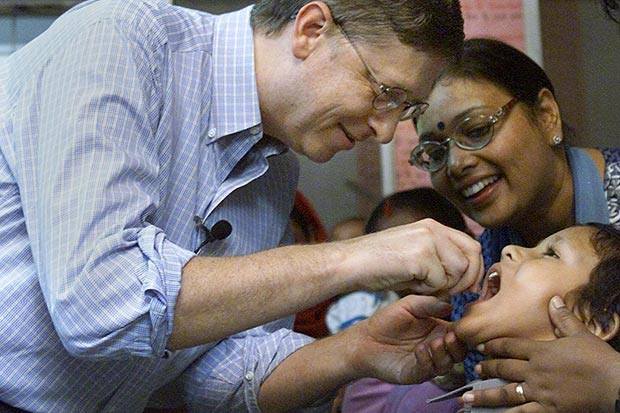
by Barbara Loe Fisher
The Vaccine Reaction
India’s Ministry of Health and Family Welfare has reported that it has investigated approximately 18,000 cases of Acute Flaccid Paralysis (AFP) in the country since January 2015 as part of its national polio surveillance program, established in 1997, and that all of the cases have tested negative for poliovirus. Some 50,000 cases of AFP are being detected annually in India.1 2
According to a press release issued by the Ministry:
India is polio-free. The country reported its last case of wild poliovirus in 2011. After three consecutive polio-free years, the South-East Asia Region of WHO, comprising of 11 countries (including India), was certified polio-free on 27 March 2014. Despite this progress, India has maintained a high vigil and ensured that no complacency sets in order to maintain the polio-free status for the last more than 4 years. It has taken appropriate actions to ensure high population immunity against polio as well as for maintaining a sensitive surveillance system for poliovirus detection.1
Following two decades of repeated child vaccination campaigns using OPV in India, the World Health Organization (WHO) in early 2014 pronounced India “free” of wild-type polio. The controversial declaration comes at a time when India has been experiencing a huge increase in reported cases of non-polio AFP (NPAFP).3
In 2004, 12,000 cases of non-polio paralysis were reported but that number had increased by 2012 to 53,563 cases for a national rate of 12 per 100,000 children. Two pediatricians in India compiled data from the polio surveillance program and discovered a link between the increase in OPV use among children during stepped-up polio eradication campaigns and the increasing cases of NPAFP among children.
In a 2012 article published in a medical ethics journal,4 the doctors stated, “Clinically indistinguishable from polio paralysis but twice as deadly, the incidence of NPAFP was directly proportional to doses of oral polio received.” Because polio is among the more than 200 related viruses in the Picornaviridae family of enteroviruses, the doctors suggested that public health officials investigate “the influence of strain shifts of enteropathogens induced by the [polio] vaccine given practically every month.”
Although not nearly as prevalent as in India, NPAFP cases are also occurring in the U.S. In early 2014, neurologists at Stanford and University of California reported five cases of sudden paralysis of one or more limbs in children ages two to 16—all fully vaccinated against polio—and the California Department of Health of Health began investigating 20 more similar cases. Two of the five children tested positive for enterovirus-68 (EV68).5
During the summer of 2014, many more apparently healthy American children in several states, including Colorado, Missouri, Michigan and Massachusetts, were reported to be suddenly stricken with paralysis after developing cold and flu-like symptoms. Several died and, although some of the cases were associated with EV68, others were not.6
Like polio, other enteroviruses are transmitted through shedding of virus in respiratory and gastrointestinal body secretions. Most of the time an enterovirus infection is asymptomatic or there are mild flu-like symptoms that do not progress to paralysis or other serious complications.7 Rarely enterovirus infections like EV68 will cause inflammation of the brain (meningitis, encephalitis), paralysis and death.
The exact cause of the cases of NPAFP among children in California, most of whom were born after 1999 and presumably were given shots of inactivated polio vaccine (IAV), has not been determined. Similarly in India, there has been no determination by government health officials about why there has been a recent dramatic increase in paralysis among tens of thousands of children that country.
Read the full article here.
See Also:
As Enterovirus D68 Deaths Increase, Are Vaccine Contaminants to Blame?
Paralysis Haunts ‘Polio Free’ India
Government Appointed Epidemics Create Instant Vaccine Market: Polio
References:
1 Cases reported from Uttar Pradesh in section of media are of AFP (Acute Flaccid Paralysis), not Polio. Business Standard June 20, 2015.
2 Govt. says cases reported from UP are of Acute Flaccid Paralysis, not polio.NetIndian News Network June 20, 2015.
3 Raj GN. Polio free does not mean paralysis free. The Hindu Jan 3, 2013.
4 Vashisht N, Puliyel J. Polio programme: let us declare victory and move on. Indian Journal of Medical Ethics 2012 9(2): 114-117.
5 Maron DF. Is a Wave of Poliolike Symptoms in California Cause for Alarm? Scientific American Feb. 24, 2014.
6 O’Connor A. Enterovirus 68 and Paralysis Link Remains Uncertain. The New York Times Oct. 3, 2014.
7 Schwartz RA. Enteroviruses. Medscape Mar. 3, 2014.





Leave a Reply